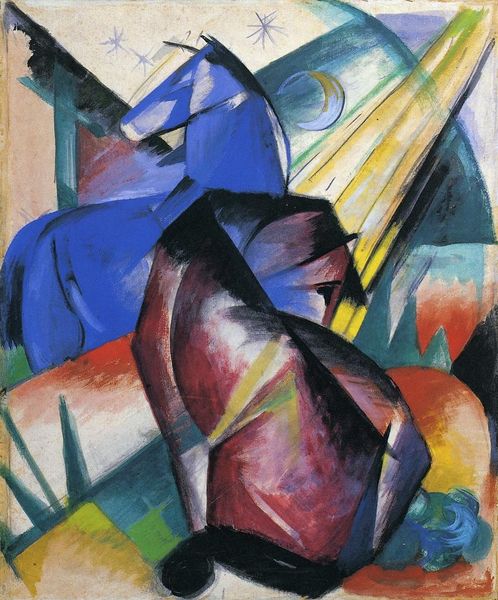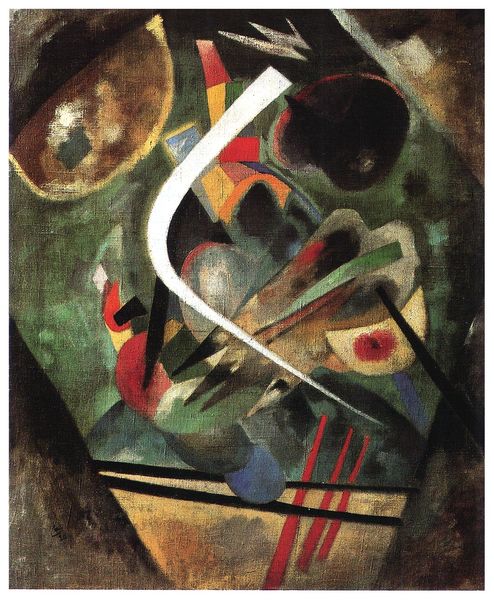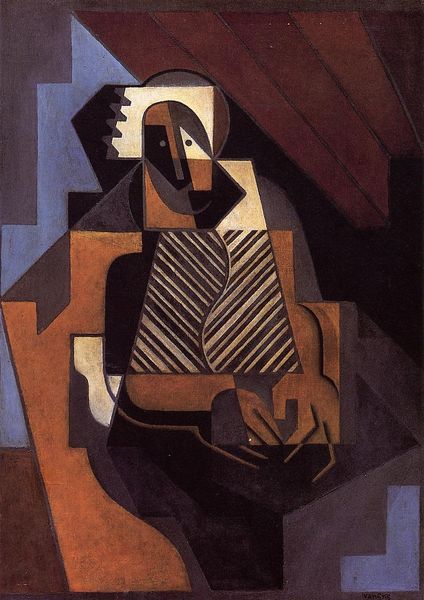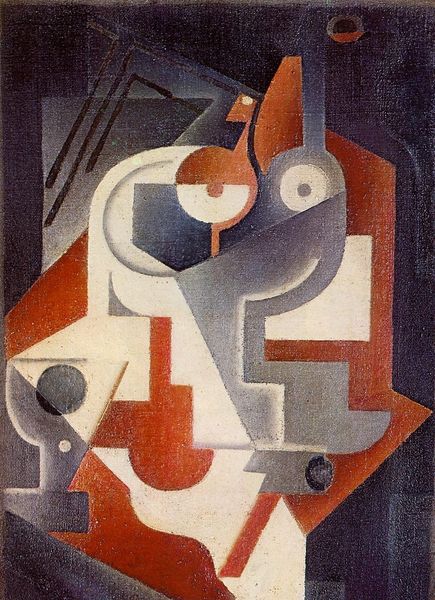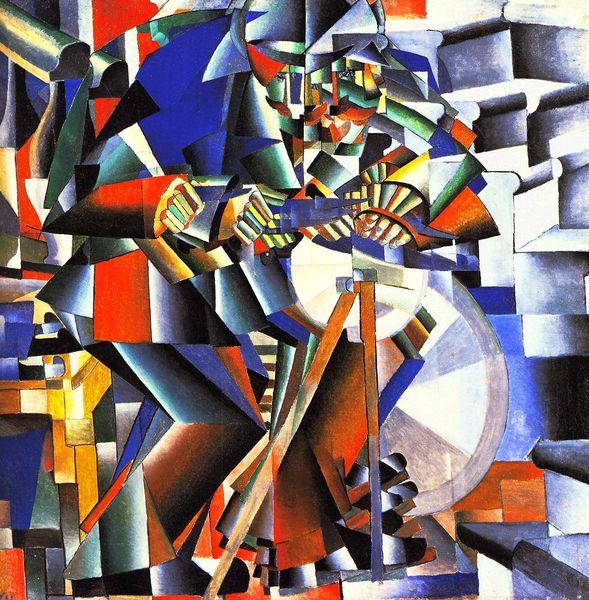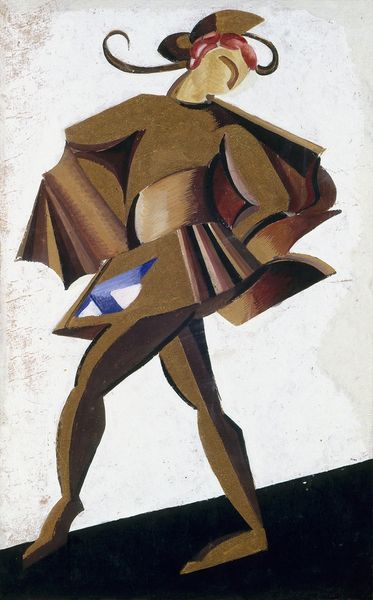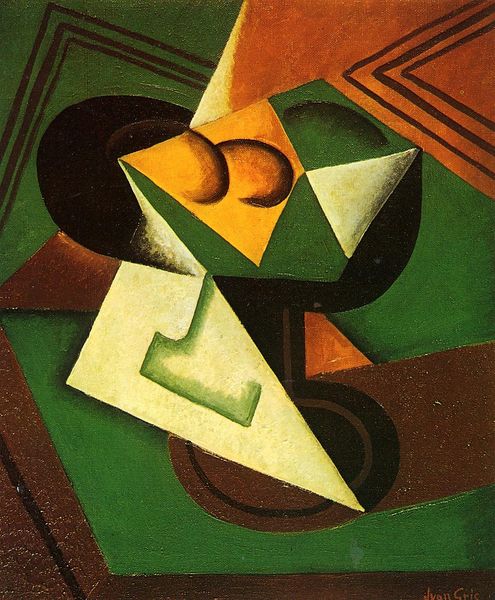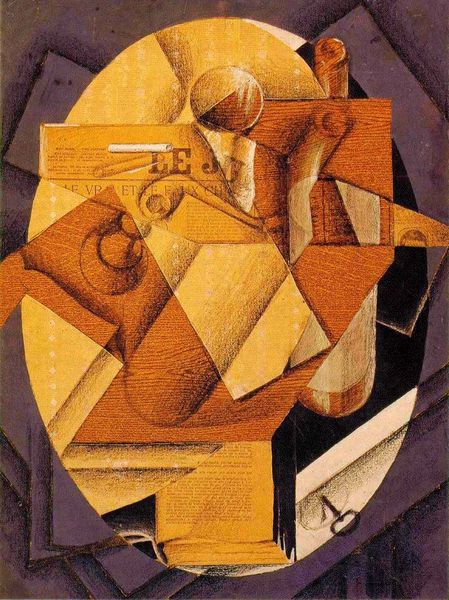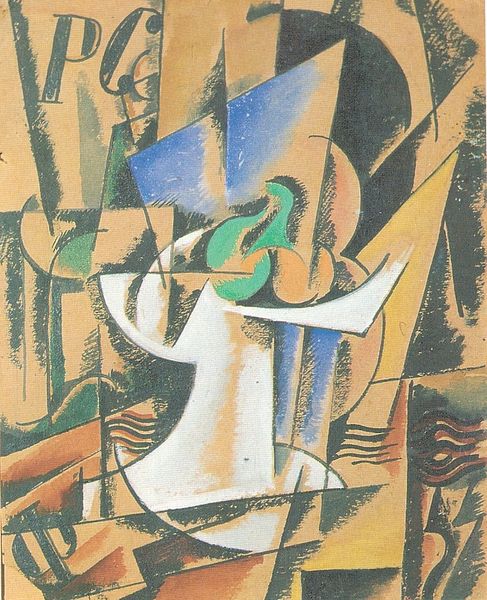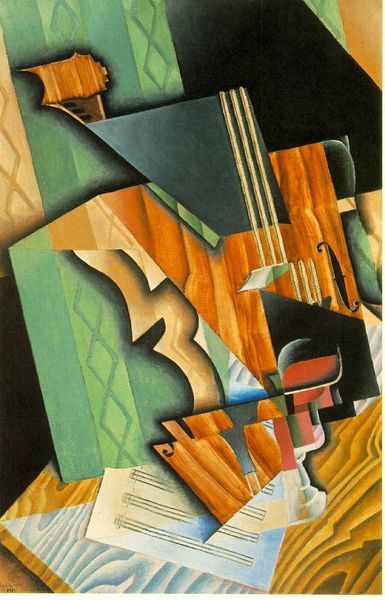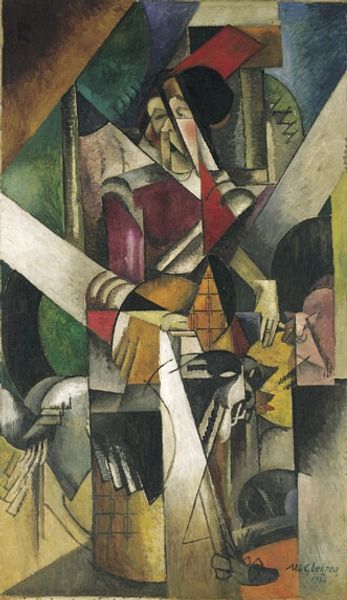
oil-paint
#
cubism
#
abstract painting
#
oil-paint
#
figuration
#
oil painting
#
neo expressionist
#
geometric
#
expressionism
#
abstraction
#
expressionist
Copyright: Public domain
Curator: Here we have Josef Capek’s “Fantomas,” painted in 1918 using oil. It's a striking example of Czech Cubism, very bold. Editor: Yes, it strikes me immediately with its unsettling nature, like a puzzle refusing to resolve. There is such angularity, a fractured depiction of something menacing. Curator: Capek, as a member of the Group of Fine Artists, fully embraced the Cubist exploration of form, pushing its boundaries. What can you unpack in its symbolic composition? Editor: The title itself, "Fantomas," refers to a villain, a master of disguise in French pulp fiction. So the geometric forms—the knife-like shapes, the masked face—they are all symbols of concealed identity and potential violence. The fragmented imagery is meant to evoke psychological distress. Curator: And I'd add that it’s vital to consider the materials themselves and the historical context. Oil paint enabled this flattening of form, a conscious departure from traditional painting techniques that sought depth and realism. Editor: Good point! It is as though reality itself has become dangerous and unstable and Capek seeks to externalize the sense of the collapse that must have preoccupied many during the war. The colors and clashing forms, even as they stay relatively grounded. Curator: True, 1918, nearing the end of WWI… a world crumbling. It's hard not to see that reflected in the sharp, broken planes. Even the seemingly innocuous yellow hues are quite muddied, hinting at the overall decay of society around the artist. This is not detached formal exercise. Editor: Exactly. What Capek does so powerfully, using these fractured images, is to embody that wariness of appearances. The mask, here constructed through careful arrangement of geometric forms, invites an interrogation of what lies beneath. Curator: It's a fascinating piece in how it fuses artistic experimentation with raw, historical unease and reflects so much the mood of disruption during its making. Thank you. Editor: A perfect example of art as a vessel for history, not just reflecting, but refracting. Thank you!
Comments
No comments
Be the first to comment and join the conversation on the ultimate creative platform.

